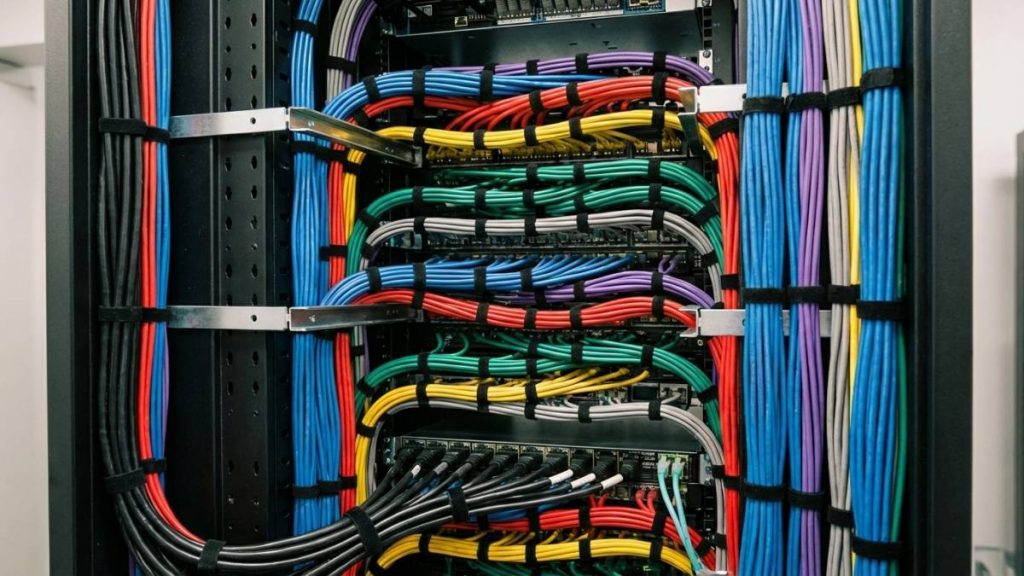In today’s digital-first business environment, continuous access to online resources, cloud platforms, and data services is mission-critical. For organizations that rely on high availability to deliver products and services—or simply to keep the lights on—connectivity downtime can lead to lost revenue, damaged reputations, and serious operational setbacks.

Whether you’re already colocating infrastructure in a data center or considering a move from on-premises hosting, understanding connectivity redundancy is vital. Redundant uplinks and failover planning aren’t just technical details—they’re the backbone of uninterrupted business continuity.
This article will explore the importance of connectivity redundancy, the strategies behind failover planning, and how diverse pathway infrastructure and multi-carrier Internet solutions—like Datacate’s house blend bandwidth—offer seamless, high-availability connectivity that’s difficult, if not impossible, to replicate in a typical on-prem environment.
Why Redundancy Matters
Let’s begin with the obvious: Internet downtime costs money. According to recent studies, the average cost of downtime for businesses ranges from $5,600 per minute to over $100,000 per hour, depending on company size and industry. Beyond the immediate financial hit, unplanned outages erode customer confidence and impact everything from e-commerce sales to employee productivity.
For businesses that operate their own server rooms or on-premises IT infrastructure, connectivity usually depends on one or two ISP circuits—each coming into the building along similar physical paths. Even with multiple ISPs, you’re still at risk if those circuits share conduit space, local termination points, or suffer regional fiber cuts. True redundancy requires more than having a second Internet provider—it demands architectural separation, intelligent routing, and seamless failover capabilities.
This is where data centers like Datacate deliver a serious advantage.
Data Center Connectivity: Built for Redundancy
Unlike the average office or on-site server room, a professionally managed data center is designed with connectivity redundancy from the ground up. High availability starts with physical diversity—fiber paths enter the facility from different points, follow different routes, and terminate with different providers.
At Datacate, the network core includes upstream links to multiple Tier 1 and Tier 2 ISPs, using diverse entry points and provider networks to ensure no single failure can disrupt service. Redundant edge routers and core switches create additional fault tolerance, while intelligent routing protocols like BGP (Border Gateway Protocol) keep traffic flowing even when an upstream connection fails.
This infrastructure allows Datacate to offer a multi-carrier, BGP-blended Internet solution—the Datacate House Blend—providing our clients with all the benefits of multi-path redundancy over a single Ethernet drop. Let’s explore what that means in practical terms.
BGP Blending: Seamless Failover, One Wire
BGP, the protocol that powers routing decisions across the Internet, plays a critical role in delivering seamless, redundant bandwidth. Datacate leverages BGP to blend Internet transit from multiple upstream carriers into a single, cohesive service.
When you connect to Datacate’s house blend Internet, your traffic can dynamically route through multiple providers based on real-time performance, availability, and policy settings. If one upstream carrier experiences a failure—whether due to maintenance, congestion, or a regional outage—BGP instantly reroutes traffic through a healthy path without dropping connections or requiring client-side reconfiguration.
This gives your colocated infrastructure automatic failover and load balancing, all via a single Ethernet uplink. There’s no need to deploy multiple routers or request multiple handoffs—Datacate handles the complexity of path diversity and redundancy within the core network, while clients enjoy resilient Internet service as if it came from a single source.
Compare this to most on-premises environments, where obtaining true carrier diversity requires significant effort and cost. You’d need to provision services from multiple ISPs, ensure physical path separation, invest in enterprise-grade routers with BGP support, and have the expertise to manage the setup. Even then, you’re still vulnerable to regional issues and last-mile problems.
With Datacate’s BGP-blended Internet, that entire burden is removed from your plate—and your business benefits from a level of uptime assurance that’s hard to match outside a data center setting.
Planning for Failover: Beyond Just Bandwidth
While multi-carrier bandwidth provides essential failover protection, full connectivity redundancy includes several more considerations:
1. Power Redundancy
No network can function without power. Data centers offer redundant power circuits, backup generators, and UPS systems that work in tandem to keep network infrastructure online through power loss events. On-premises setups rarely match this level of redundancy.
2. Hardware Redundancy
Dual-homed switches, routers, and firewalls protect against equipment failure. Clients can configure colocated infrastructure with high availability in mind—using redundant uplinks, NIC teaming, and hardware failover to eliminate single points of failure.
3. Route Diversity
Route diversity at the network layer ensures your IP space is reachable through multiple carriers. Datacate’s BGP implementation advertises your network to all upstream providers simultaneously, giving your services a stable public presence even if one provider goes dark.
4. Monitoring and Alerts
Even the best infrastructure needs visibility. Datacate provides robust monitoring and alerting services, so if any part of your connectivity path experiences issues, you’re notified quickly—and corrective actions can be taken immediately, often before end users are even aware.
5. Disaster Preparedness
Connectivity redundancy is also foundational in disaster recovery and business continuity planning. Whether replicating workloads across multiple regions or maintaining uptime during regional disruptions, colocating in a data center with built-in redundancy gives you a massive head start.
The Hidden Cost of On-Premise Downtime
While hosting services in-house to maintain control and minimize costs is tempting, the hidden risks of insufficient redundancy can quickly overwhelm those benefits. Consider the following common pain points of on-premises hosting:
- Single points of failure in ISP routing, building power, or internal switching
- Expensive and complex BGP implementation, often beyond the scope of small IT teams
- Shared infrastructure vulnerabilities, like power failures affecting both ISP lines
- Difficulty scaling connectivity, especially when adding carriers or bandwidth
- Long recovery times, with local outages requiring on-site troubleshooting
When you factor in the labor, hardware, and administrative effort required to build a truly redundant on-premises solution, the business case for colocation in a facility like Datacate becomes clear.
Datacate’s Advantage
Datacate’s Rancho Cordova data center offers everything discussed above as part of its standard service portfolio:
- Multiple Tier 1 and Tier 2 ISP uplinks, physically and logically diverse
- Blended BGP Internet over a single handoff, with automatic failover
- 24/7 monitoring and response, staffed by a domestic team of experts
- Redundant power infrastructure, including battery backup and generator
- Robust client support, with assistance configuring redundant setups for colocated equipment
In short, Datacate brings high-availability connectivity within reach for organizations of all sizes. Whether you’re hosting public-facing web services, private enterprise applications, or backup and DR infrastructure, your connectivity should be as reliable as your services are vital.
Conclusion: Plan for Uptime, Not Just Speed
Too often, businesses treat Internet connectivity as a commodity—focusing on bandwidth and speed while overlooking redundancy and resiliency. However, in an era where downtime can bring operations to a halt, connectivity should be planned with the same attention as any other mission-critical resource.
By colocating infrastructure in a professionally managed data center like Datacate and leveraging their multi-carrier BGP-blended Internet service, your business gains enterprise-grade connectivity, seamless failover, and peace of mind—without the cost and complexity of building it yourself.
Don’t wait until your next outage to start thinking about redundancy. Contact Datacate today to learn how our data center solutions can help keep your business online, no matter what tomorrow brings.







